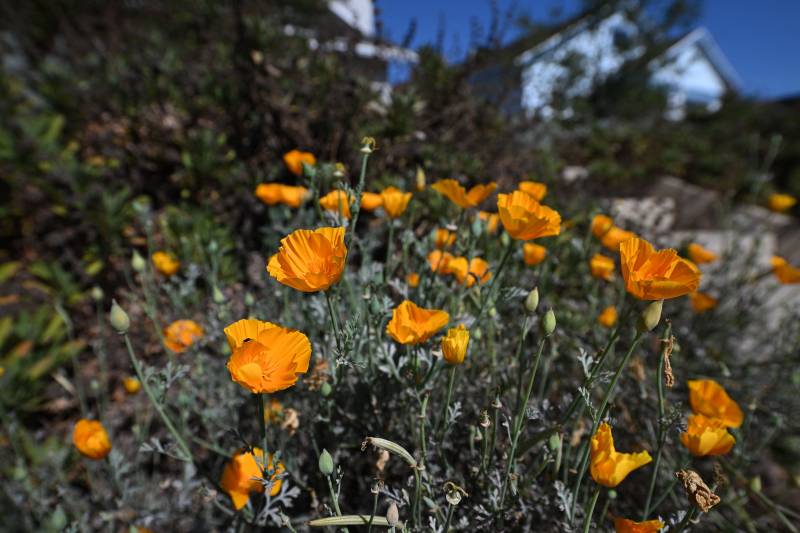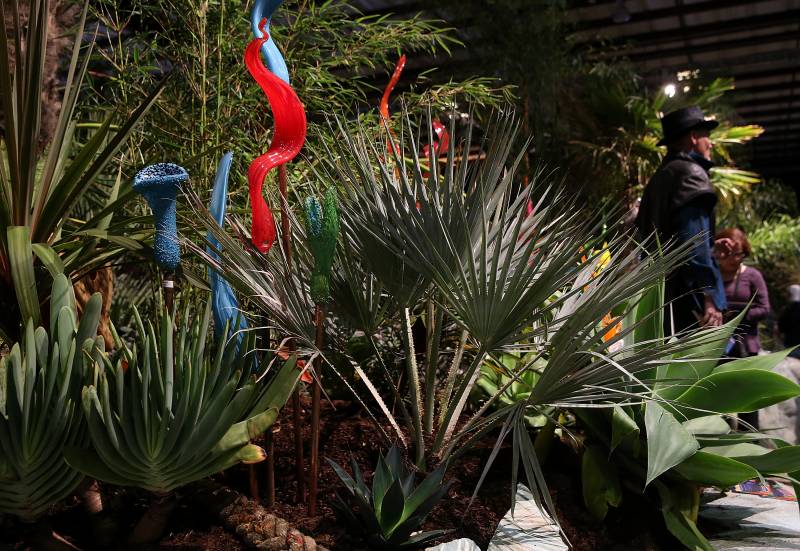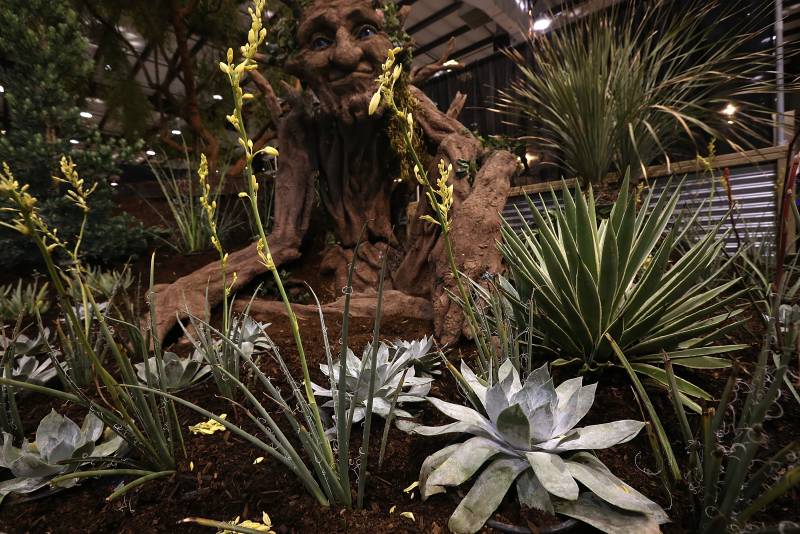Skip to:
- How do I begin?
- How much will this cost?
- What plants are best for low-water landscaping?
- How do I care for my low-water garden?
The megadrought California is enduring right now is the worst in more than a millennium.
In the last two decades, we have only sporadically not been in a state of drought, and the first three months of 2022 were the driest on record. Now, nearly every inch of California is experiencing severe or extreme drought, or even worse: A thick, donut-shaped ring in the Central Valley is in an exceptional drought — the highest drought designation the U.S. Drought Monitor gives.
Most residents, though, have not been moved to replace their lawns by the kinds of stark facts that seem only to lead to more restrictions. But what if moving to a low-water landscape meant more butterflies, more birds, and a startling array of colors and textures? Since about half of all residential water use goes to landscape irrigation, that’s a good place to look first to make some significant cuts in your water use, and your water bill.
So, what are the best ways to begin? And are there other benefits to low-water landscaping besides the obvious?
KQED Forum spoke with three experts about how to get started and what to do:
- Flora Grubb, owner of Flora Grubb Gardens in San Francisco
- Shawn Maestretti, founder and principal of the landscape architectural design firm Studio Petrichor
- Caitlin Hernández, LA Explained reporter with KPCC-LAist

How and where do I begin?
First you want to build healthy soil, but you don’t actually have to take out your grass to do that. Instead, you can cover it up. Shawn Maestretti recommends what he calls “lasagna mulching.” Think of ordinary cardboard as the pasta and mulch as the cheese, and layer the cardboard and mulch right over the grass — using recycled moving boxes, for example, rather than ones with waxed or brightly colored cardboard.
This part doesn’t need to cost a lot, Maestretti notes. Cardboard, of course, can be free; you can look for leftover moving boxes on sites like Craigslist and Buy Nothing, and sometimes you can find free mulch there, too. Some cities offer free mulch.
“Overlapping that cardboard and layers of thick mulch help to prevent that grass from growing back and it starts to build healthy soil,” Maestretti says. “That’s a place to start.”
Flora Grubb says the method for removing the lawn can depend on how large it is. Using a flat shovel to remove the grass may not be too much work for a small area.
“I hopped on the YouTube to take a look,” she said, “and there are some great suggestions of DIY ways to remove a medium-sized lawn.”
What about using chemicals to get rid of the grass?
Nope. For one thing, the chemicals may not be safe for children, pets or adults, says Grubb. They also work against one of the main things you’re trying to do, which is build healthy soil.
It’s too much work. What about just using fake grass?
That would be another nope. A lot of chemicals go into producing fake grass, so it also won’t build healthy soil. Then, there’s the heat. Synthetic turf increases the heat-island effect, Maestretti says, and with a gravel layer underneath it, water won’t get into the soil.
“We want life,” he said. “We want to support life.”
How much will this cost?
Major landscape overhauls can be expensive, depending on the size of your yard and how much you spend on plants, says Caitlin Hernández. In her recent story, “How to Swap Out Your Thirsty Lawn With Drought-Friendly Plants,” Hernández describes the rebate programs some water districts offer. For example, some pay $2 to $4 per square foot to trade out your lawn.


